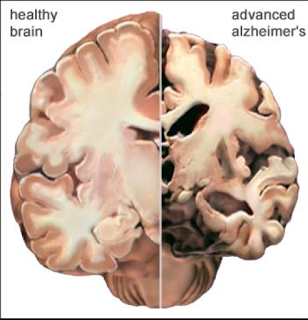Dr. Fernandez explored the navigational impairments of Alzheimer's
Disease (AD). Being one of the most prevalent disease for the elderly, it
requires attention in order to find ways to cure the problem. Dr. Fernandez
looked at the visual processing of optic flow to understand whether there is a
higher threshold which leads to navigational impairments. Event related
potentials were measured when the participants were subject to driving and
navigation. It was clear that patients with early AD has diminishing response
amplitudes.
McLachlan
and his colleagues looked at AD in terms of memory and a potential threshold
effect which may be present. In their experiment, they had three groups: young
health individuals, older healthy individuals, and individuals who were
diagnosed with AD. Each group was read sentences at one point and then
presented more sentences either 1-2 hours and 4-14 days later. They were asked
whether the sentences they were being presented were the same as the sentences
they had read initially. The results suggested that both the young and older
healthy individuals were mainly able to recognize the sentences if they were
similar, though the patients with AD were not able to even for short delays.
They tested this by looking at the speed of reading the sentence. It has been
previously shown how if something is retained, one is able to read it faster.
This
experiment was similar to that of Dr. Fernandez’s experiment in that it was
measuring the delay patients with AD had when presented a stimulus. To improve
the study, McLachlan and his colleagues could have considered looking at ERPs
when the participants were given the sentences. This way, they could see what
part of the brain was being stimulated initially when the sentences were in
working memory and what parts of the brain showed activity when they were
actively trying to recall. Perhaps there exist a threshold effect in that the
memory of the sentences exists in the AD patients, but the connection is not
strong enough for it to be verbalized consciously.
To really
get to the cause of the disease, it is important to consider its effects.
Patients with AD often have their cortex shrivel, the hippocampus shrinks, and
the ventricles become enlarged. Ultimately, the problem boils down to the formation
of plaques between the nerve cells. If we can understand the proteins involved
in the formation of these plaques, we might be able to use CRISPR to knockout
the gene which is resulting in the plaques.
Research in
this field is essential as we strive to advance humanity. Because it is a
growing problem, it is important to look at the different possible mechanisms
of AD in hopes that we find a way to cure it. Currently we cannot cure this
neurodegenerative disorder, but we can only down its progression. It is
fascinating how one small protein can potentially be the difference between
having AD and not having it. Surely, one day we will be able to conquer this
disease as well!


No comments:
Post a Comment